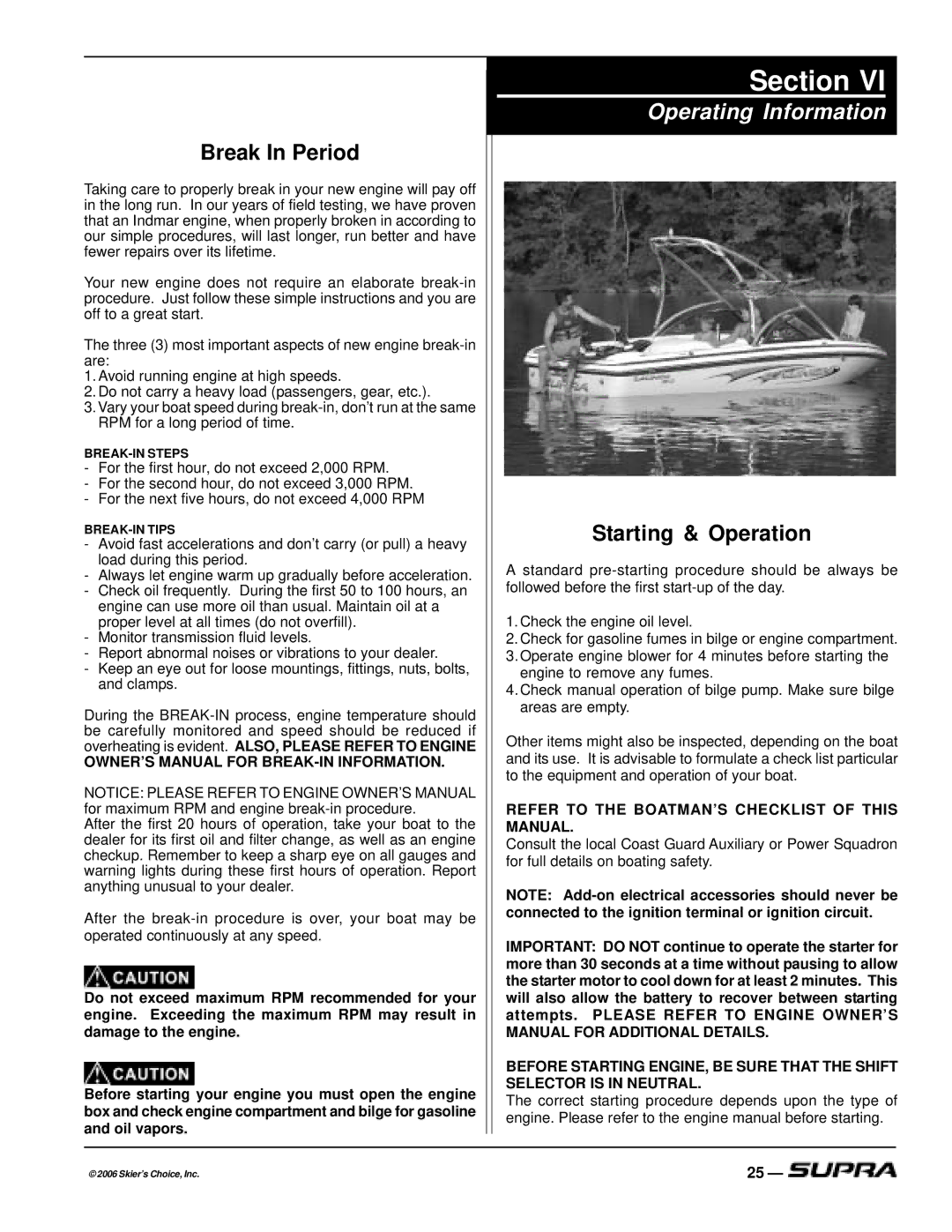
Break In Period
Taking care to properly break in your new engine will pay off in the long run. In our years of field testing, we have proven that an Indmar engine, when properly broken in according to our simple procedures, will last longer, run better and have fewer repairs over its lifetime.
Your new engine does not require an elaborate
The three (3) most important aspects of new engine
1.Avoid running engine at high speeds.
2.Do not carry a heavy load (passengers, gear, etc.).
3.Vary your boat speed during
-For the first hour, do not exceed 2,000 RPM.
-For the second hour, do not exceed 3,000 RPM.
-For the next five hours, do not exceed 4,000 RPM
-Avoid fast accelerations and don’t carry (or pull) a heavy load during this period.
-Always let engine warm up gradually before acceleration.
-Check oil frequently. During the first 50 to 100 hours, an engine can use more oil than usual. Maintain oil at a proper level at all times (do not overfill).
-Monitor transmission fluid levels.
-Report abnormal noises or vibrations to your dealer.
-Keep an eye out for loose mountings, fittings, nuts, bolts, and clamps.
During the
OWNER’S MANUAL FOR
NOTICE: PLEASE REFER TO ENGINE OWNER’S MANUAL for maximum RPM and engine
After the first 20 hours of operation, take your boat to the dealer for its first oil and filter change, as well as an engine checkup. Remember to keep a sharp eye on all gauges and warning lights during these first hours of operation. Report anything unusual to your dealer.
After the
Do not exceed maximum RPM recommended for your engine. Exceeding the maximum RPM may result in damage to the engine.
Before starting your engine you must open the engine box and check engine compartment and bilge for gasoline and oil vapors.
Section VI
Operating Information
Starting & Operation
Astandard
1.Check the engine oil level.
2.Check for gasoline fumes in bilge or engine compartment. 3.Operate engine blower for 4 minutes before starting the
engine to remove any fumes.
4.Check manual operation of bilge pump. Make sure bilge areas are empty.
Other items might also be inspected, depending on the boat and its use. It is advisable to formulate a check list particular to the equipment and operation of your boat.
REFER TO THE BOATMAN’S CHECKLIST OF THIS MANUAL.
Consult the local Coast Guard Auxiliary or Power Squadron for full details on boating safety.
NOTE:
IMPORTANT: DO NOT continue to operate the starter for more than 30 seconds at a time without pausing to allow the starter motor to cool down for at least 2 minutes. This will also allow the battery to recover between starting attempts. PLEASE REFER TO ENGINE OWNER’S MANUAL FOR ADDITIONAL DETAILS.
BEFORE STARTING ENGINE, BE SURE THAT THE SHIFT SELECTOR IS IN NEUTRAL.
The correct starting procedure depends upon the type of engine. Please refer to the engine manual before starting.
© 2006 Skier’s Choice, Inc. | 25 — |
